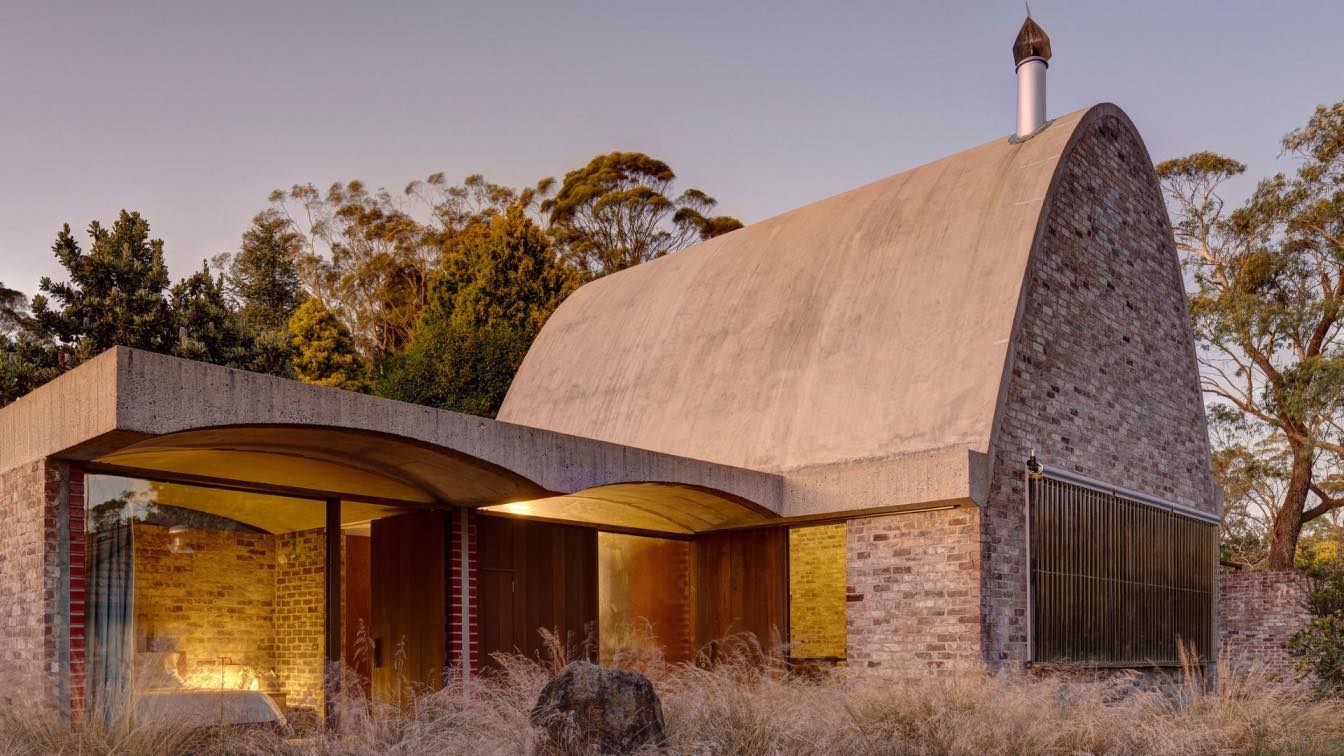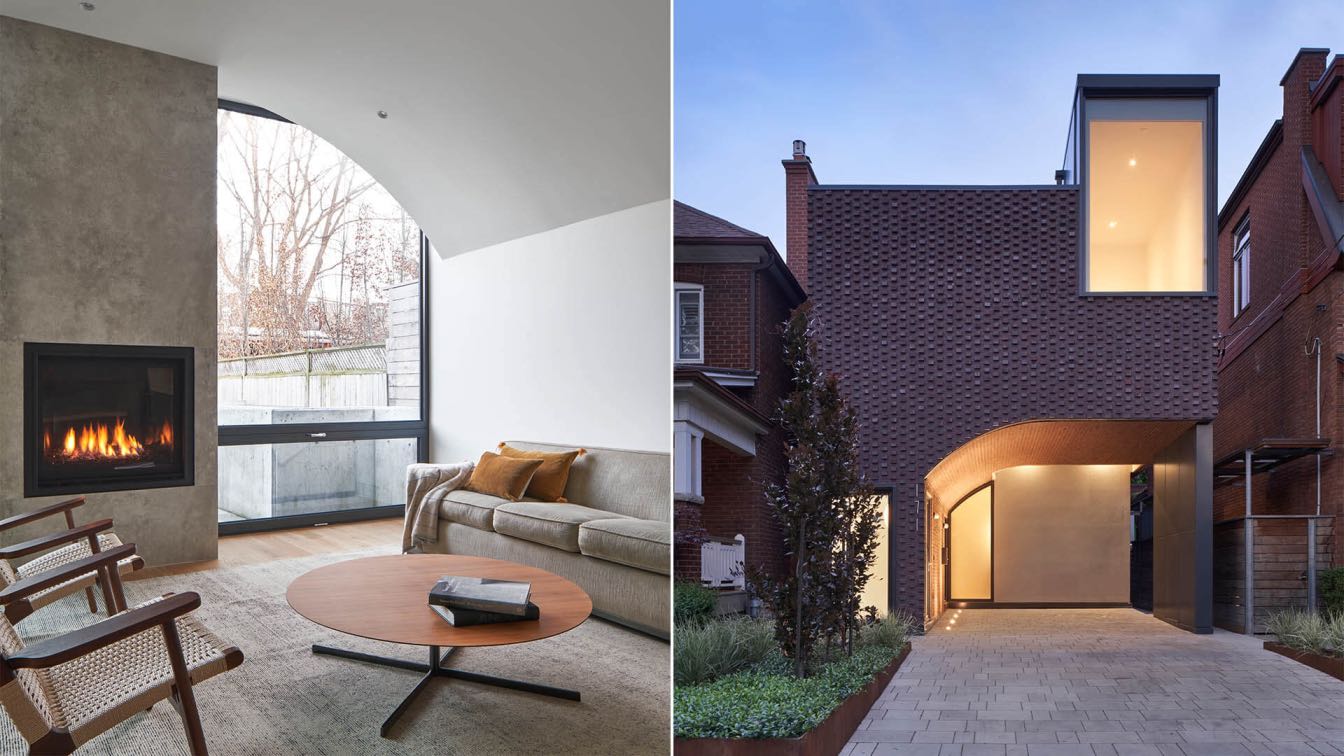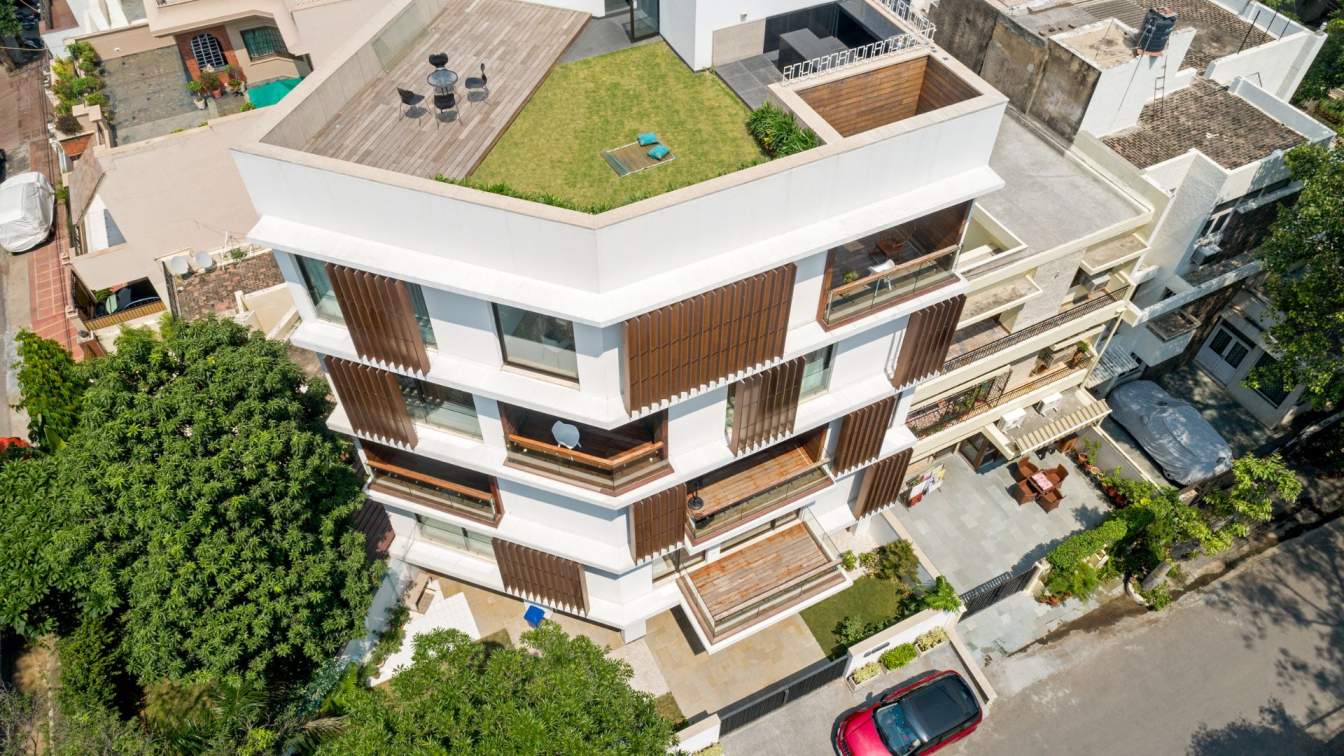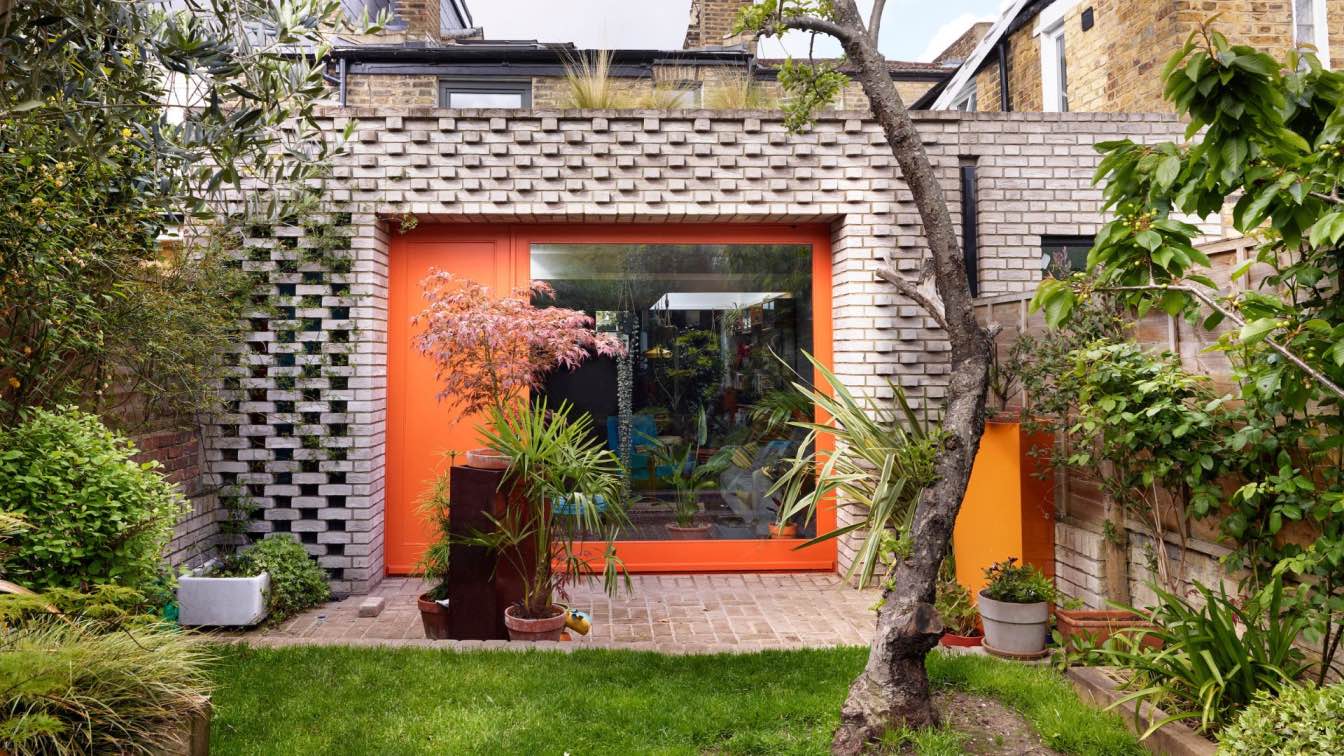Peter Stutchbury Architecture: The most recent recipient of the highest residential award for architecture in Australia - The Robin Boyd Award 2021. (the Australian Institute of Architects did not award the Robin Boyd Award in 2022).
To try to summarise this house is virtually impossible. Walking into the space for the first time is difficult to describe. It feels ancient and modern at the same time. The references are so varied, "it feels like a church, a castle, a railway arch, a middle eastern grain store". The commissioning client was inspired by a 19th-century ammunition bunker he once saw in Romania built of raw brick with arches. The architect references work by Le Corbusier in India. However, it is distinctly a singular design. The key architectural feature is the parabolic vaulted ceiling, a self-supporting structure made of recycled bricks having a 3.5m long by 2.5m wide elliptical retractable skylight that is unglazed and tilted 20 degrees to the south to gaze at the stars.
What was the brief?
The commissioning client, astronomer and engineer, Basil Borun asked award-winning architect Peter Stutchbury to take him to the stars without leaving his living room.

What were the key challenges?
Finding the location of the skylight in an unusual soaring roof, 7.5m at its apex. It is a parabolic vault, a self-supporting structure made of recycled bricks, many of which were picked by Mr Borun. Diagnosed with Type 2 diabetes, Basil was wheelchair bound and therefore the design has to be truly accessible.
What were the solutions?
It took trial and error to find the right size and spot for the skylight so Mr Borun could see his favourite constellations in the Milky Way, including Pavo. Peter Stutchbury Architecture’s project designer Fernanda Cabral and builder Mark Tan held cut-outs of prototypes of the skylight up against the sky until Mr Borun was satisfied. The wheelchair had a tolerance of 10mm, therefore no step could be larger than 10mm. The house was designed so Mr Borun could go from his car to anywhere in his house with a single turn of the wheelchair. The rooms were designed off a long, wide hallway with sliding doors.
Key products used:
Built of bricks, recycled when an apartment building in western Sydney was demolished. The vaulted room is reminiscent of a cathedral yet feels embracing and welcoming rather than imposing. And of a domestic scale, albeit an extraordinarily voluminous one.

Who are the clients and what's interesting about them?
The polymath’s [client's] long resume includes undergraduate degrees in architecture, a triple major in engineering (mechanical, nuclear and aerospace) and a masters in astronomy. He describes himself as a “post modern-techno romantic”. Mr Borun is also an amateur rocket enthusiast and designs them in the shed, building them using 3D printers. It is with great sadness that Mr Borun passed away Easter 2022 and the house is now subject to sale to find the next custodians of the wonderful architectural legacy of Basil Borun. The sale listing can be seen at https://www.modernhouse.co/listings/night-sky-blackheath/
How is the project unique?
Mr Stutchbury said rarely was a project more considerate of the night than day. “We have put skylights in a building but not in such a prophetic and highly considered way.”
What are the sustainability features?
Designed to last beyond 120 years
48 photovoltaic panels
15.5 kW of power gen, 34 kW of storage
Electric vehicle charging x2
60,000 litre filtered rainwater tank
Evacuated tubes for solar hot water
Hydronic in-floor heating
Low-toxic finishes and fittings
Low-energy lighting
Low-water gardens
Recycled double-brick and insulated walls provide thermal mass to absorb and release heat
The oculus is central to the dwelling’s passive heating and cooling system, enabling two-way ventilation


































